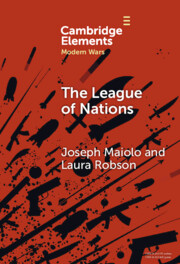Refine search
Actions for selected content:
15401 results in Military history
2 - From Tactical Command to Political Negotiator
-
- Book:
- Moshe Dayan
- Published online:
- 03 April 2025
- Print publication:
- 10 April 2025, pp 48-89
-
- Chapter
- Export citation
9 - The Turning Point
-
- Book:
- Moshe Dayan
- Published online:
- 03 April 2025
- Print publication:
- 10 April 2025, pp 339-375
-
- Chapter
- Export citation
Introduction
-
- Book:
- Moshe Dayan
- Published online:
- 03 April 2025
- Print publication:
- 10 April 2025, pp 1-20
-
- Chapter
-
- You have access
- HTML
- Export citation
1 - The Education of a Strategist
-
- Book:
- Moshe Dayan
- Published online:
- 03 April 2025
- Print publication:
- 10 April 2025, pp 21-47
-
- Chapter
- Export citation
Index
-
- Book:
- Moshe Dayan
- Published online:
- 03 April 2025
- Print publication:
- 10 April 2025, pp 441-448
-
- Chapter
- Export citation
10 - The Dealmaker
-
- Book:
- Moshe Dayan
- Published online:
- 03 April 2025
- Print publication:
- 10 April 2025, pp 376-418
-
- Chapter
- Export citation

Moshe Dayan
- The Making of a Strategist
-
- Published online:
- 03 April 2025
- Print publication:
- 10 April 2025

Leaving the Fight
- Surrender, Prisoners of War, and Detainees in Western Warfare
-
- Published online:
- 01 March 2025
- Print publication:
- 06 February 2025

The League of Nations
-
- Published online:
- 20 February 2025
- Print publication:
- 20 February 2025
-
- Element
-
- You have access
- Open access
- HTML
- Export citation
2 - The Invention of European Honorable Surrender during the Age of Chivalry
-
- Book:
- Leaving the Fight
- Published online:
- 01 March 2025
- Print publication:
- 06 February 2025, pp 32-66
-
- Chapter
- Export citation
8 - Combat, Detention Operations, and Surrender during the War on Terror, 2001–2021
-
- Book:
- Leaving the Fight
- Published online:
- 01 March 2025
- Print publication:
- 06 February 2025, pp 254-297
-
- Chapter
- Export citation
Contents
-
- Book:
- Leaving the Fight
- Published online:
- 01 March 2025
- Print publication:
- 06 February 2025, pp vii-vii
-
- Chapter
- Export citation
Conclusion
-
- Book:
- Leaving the Fight
- Published online:
- 01 March 2025
- Print publication:
- 06 February 2025, pp 298-315
-
- Chapter
- Export citation
3 - The Honors of War in Early Modern Surrender, 1650–1789
-
- Book:
- Leaving the Fight
- Published online:
- 01 March 2025
- Print publication:
- 06 February 2025, pp 67-104
-
- Chapter
- Export citation
Index
-
- Book:
- Leaving the Fight
- Published online:
- 01 March 2025
- Print publication:
- 06 February 2025, pp 320-332
-
- Chapter
- Export citation
Copyright page
-
- Book:
- Leaving the Fight
- Published online:
- 01 March 2025
- Print publication:
- 06 February 2025, pp iv-iv
-
- Chapter
- Export citation
1 - Introduction
-
- Book:
- Leaving the Fight
- Published online:
- 01 March 2025
- Print publication:
- 06 February 2025, pp 1-31
-
- Chapter
- Export citation
Figures and Tables
-
- Book:
- Leaving the Fight
- Published online:
- 01 March 2025
- Print publication:
- 06 February 2025, pp viii-viii
-
- Chapter
- Export citation
Preface
-
- Book:
- Leaving the Fight
- Published online:
- 01 March 2025
- Print publication:
- 06 February 2025, pp ix-xii
-
- Chapter
- Export citation
7 - Substitutes for Victory
-
- Book:
- Leaving the Fight
- Published online:
- 01 March 2025
- Print publication:
- 06 February 2025, pp 216-253
-
- Chapter
- Export citation
